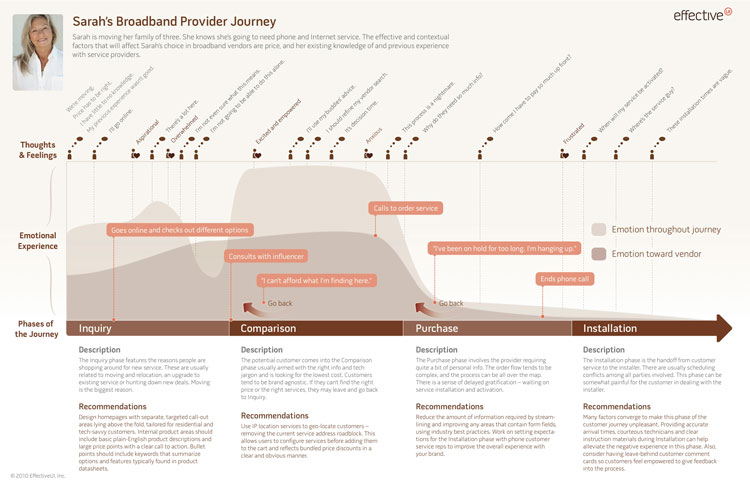Customer journey mapping is an opportunity for businesses to create unique and nurtured customer experiences. Insight drawn from various touch points on the consumer’s path to purchase allows companies to adjust all elements of their marketing, design, and production specifically to the needs of their consumers. And that’s just the outbound benefit of customer journey mapping.
When it comes to internal benefits, using customers’ perspective as a point of reference across departments, encourages employees to work towards a clear and unified vision of the customer experience. Needless to say, it’s a win-win strategy.
What is customer journey mapping?
Making a customer journey map begins with a raw sketch representing the whole journey a customer embarks on. For example, beginning with the need to buy, following with brand discovery, and ending with the purchase and its aftermath.
When that journey and all of its touch points are identified, the map can be further expanded into deep analysis of each of its elements. Here, among many other useful insights, we get to know the customer’s emotions, desires, needs, fears, and expectations.
All of this creates a working environment for employees to introduce innovations and solve various problems. The more you delve into a particular touch point, the more you can tweak it to make it better resonate with your specific customer segment.

Source: UXLady
Benefits of customer journey mapping:
- Looking closely at customer journey touch points enables businesses to make a more intimate connection with the customer. The map reveals customers’ emotions and expectations during their shopping journey, and can bring to light other factors that ultimately make or break a purchase.
- Mapping and analyzing customer’s journey melts the barrier between businesses and their customers, allowing for more tactful and considerate delivery of customer experiences. The more we learn about our customers, the more invested we are in the quality of products and services provided. This opens the door for honest and more personal messaging that has a more powerful impact on the target audience.
- With each touch point in the customer journey pinpointed and identified, it’s easier to apply data analytics for further improvement of those touch points.
- Customer journey mapping helps various departments work towards the same goals and customer expectations, streamlining operations. When there’s a problem, teams across the company can use the customer journey map to build better customer experiences together. Cross-departmental teamwork also spurs employees to invent more efficient and innovative solutions.
Alright, so you know it’s good to have a customer journey map. Now let’s take a look at what exactly should one have:
- a professional responsible for making the map
- clear operational framework, with business-specific goals and plans
- a common understanding of the brand’s intended emotional impact on the customer
- real-time data analytics and monitoring to track the influence of introduced changes
- reference materials supporting each touch point
- consistency in delivery of the brand’s desired customer experiences
Customer journey mapping is the key element in building sustainable customer relationships and lead generation. Customers know when they’re taken good care of, and they’ll repay you with a devoted following and increased revenue. However, without tending to the customer’s needs on a ground level and acting in tune with customer emotions, businesses can expect to stay behind with customer engagement and loyalty.

